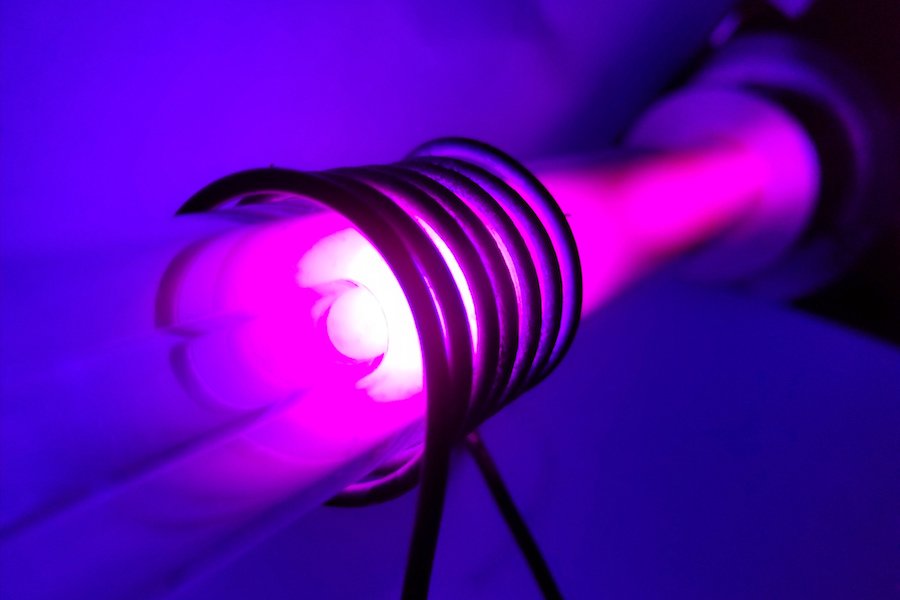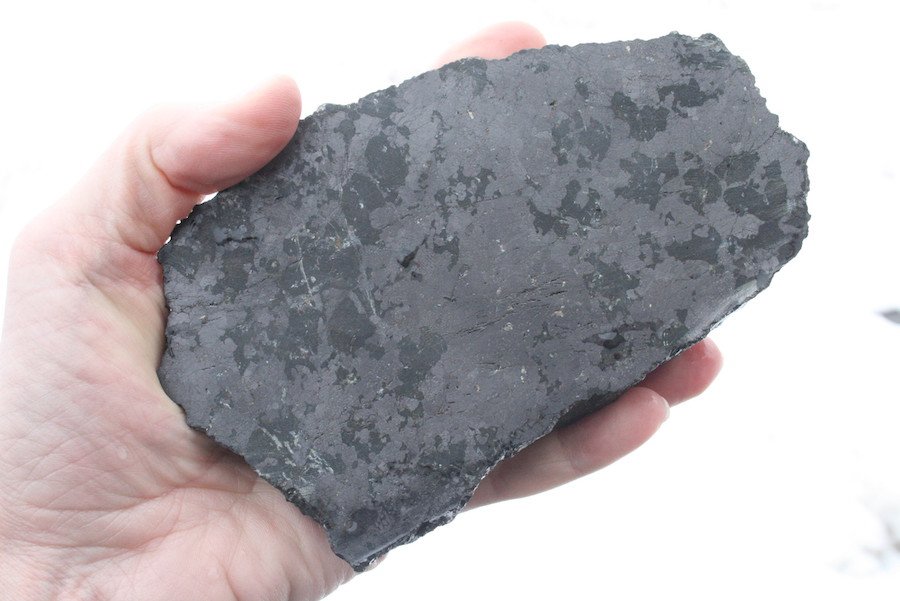Investing in Minnesota’s future—and titanium

CSE professors aim to use plasma to more sustainably process the metal ore
July 19, 2021
Titanium is one of the world’s most important metals. It’s used in everything from jet engines to hip implants. But after titanium comes out of the ground in the form of ore, it must be processed into several intermediate materials before it can be used—a task that takes a lot of time and energy, and generates a lot of waste.
University of Minnesota College of Science and Engineering faculty members David Poerschke and Uwe Kortshagen are proposing a shortcut to this process using a new method: plasma. However, this is not the liquid that exists in human blood. It’s an ionized gas, or what scientists call the fourth state of matter.
The CSE team recently received a Minnesota Futures Grant from the University’s Office of the Vice President for Research, an award that honors bold, creative, and transdisciplinary research ideas. Poerschke, an assistant professor who holds the donor-supported Chris Macosko Professorship in the Department of Chemical Engineering and Materials Science, is leading the effort. Kortshagen, who holds the donor-supported Ronald L. and Janet A. Christenson Chair in Renewable Energy, is a Distinguished McKnight University Professor in the Department of Mechanical Engineering, and his plasma technology serves as the basis for the project.
If successful, their method could be a game changer for the state of Minnesota, whose northern Iron Range holds a large deposit of titanium ore.
“Minnesota has a lot of valuable metals that are distributed throughout the Iron Range,” Poerschke explained.
“One of the challenges is how do you extract and process those materials in both an economical and environmentally sensitive way to limit pollution impacts and energy consumption? That’s the societal driver behind this research,” he said.

The plasma shortcut
In the traditional processing method, titanium ore is first turned into a liquid chemical intermediate called titanium tetrachloride (TiCl4). Then, it goes through several different forms before it’s purified and usable. What the CSE researchers are proposing will cut those steps in half—and then some. In their method, the TiCl4 is transformed directly into a titanium powder that can be shaped or 3D printed for any use.
The researchers can achieve this using a plasma reactor—a machine that creates an ionized gas by accelerating and energizing electrons. The electrons work to purify the titanium by separating it from the chlorine atoms that make up the TiCl4.
“Our shortcut here is instead of going through all these other steps, we immediately go through a plasma and produce powders for any kind of titanium manufacture,” Kortshagen explained.
He and Poerschke have demonstrated that this method works, with titanium and other metals. The next step is to see if their process is actually more sustainable and more efficient than the traditional method. They’re working with Matthew Aro of the University of Minnesota Duluth’s Natural Resources Research Institute, who will be performing what’s called a “life cycle assessment methodology” to figure out how much energy goes into the plasma process and what the environmental footprint would be.
“Our goal is a technology that uses this titanium tetrachloride as a direct feedstock to produce titanium powder in a controlled, on-demand fashion,” Poerschke said.
“At the end of the day, materials are core to our everyday lives. If you go to the doctor and you need a custom hip implant that's designed to fit your body, it would be great if that could be made down the street at Medtronic using resources that are entirely within Minnesota,” he said.
Beyond having an economic and environmental impact on their home state, the researchers said this is a relatively new and "exciting" technology that could also open the door to making new metals that are lighter and stronger. Most metal products aren’t actually made from just one metal—for example, a stainless steel coffee mug might also contain chromium and molybdenum to make it rust-resistant.
“You could envision a scenario where a designer sits down at the computer and says, ‘For this application, I need exactly this combination of strength, corrosion resistance, and temperature resistance,’” Poerschke said. “And then they download that recipe into the 3D printer with a plasma reactor that would make that metal alloy with the precise chemistry on the spot.”
Story by Olivia Hultgren
If you’d like to support research in the University of Minnesota College of Science and Engineering, visit our CSE Giving website.
